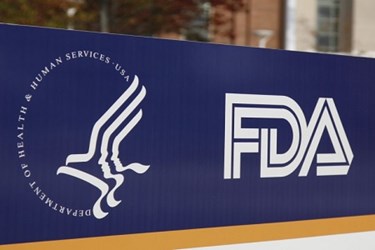FDA Wants More 'Real-World Evidence' In Device Reviews
By Jof Enriquez,
Follow me on Twitter @jofenriq

The U.S. Food and Drug Administration (FDA) is focusing on real-world device data, patient engagement, and manufacturing quality in the next two years, according to a document released by the agency's Center for Devices and Radiological Health (CDRH).
In the report, CDRH 2016-2017 Strategic Priorities, FDA says it is continuing to build a "National Evaluation System for Medical Devices" to gather real-world evidence for the premarket and postmarket safety and efficacy of medical devices.
"The national medical device evaluation system will build upon and leverage the vast amount of information and knowledge created every day as a part of routine health care or generated at home, such as patients using monitoring devices – what we call ‘real-world evidence,’” CDRH states in the report. “The National Evaluation System would utilize real-world evidence comprised of electronic health information (EHI) such as electronic health records (EHRs), registries, and medical billing claims in which device identifiers (such as UDI) have been incorporated."
To that end, FDA wants access to 25 million electronic patient records with UDI identification by Dec. 31, 2016, and 100 million records by Dec. 31, 2017. By the end of this year, FDA wants to increase by 40 percent the number of premarket and postmarket regulatory decisions that leverage real-world evidence, and by 100 percent by the end of 2017.
FDA says it wants to build on past accomplishments in integrating patient input in regulatory decisions. Over the next two years, the agency says it will "establish one or more new mechanisms for CDRH employees to obtain patient input on key pre- and postmarket issues facing CDRH and foster participation of 10 patient groups to participate" by the end of this year, increasing to 20 patient groups participating by the end of 2017. It also wants 50 percent of CDRH employees to engage patients by the end of 2016, and 90 percent of employees the following year.
In addition, FDA says that by Sept. 30, 2017, 100 percent of PMA, de novo, and HDE decisions should include a public summary of available and relevant patient perspective data considered. Also, it plans to convene the Patient Engagement Advisory Committee to discuss high-priority topics regarding patient input in the total product life cycle.
The agency also is strengthening its commitment to quality by requiring 25 percent of CDRH staff to possess quality and process improvement credentials by Sept. 30, 2017, as part of preparations for ISO 9001 certification. Moreover, it re-affirmed its commitment to its organization-wide "Quality Management Framework" — first implemented in 2013 — and the broader "Case for Quality" initiative to help device makers achieve product and manufacturing quality beyond compliance with regulatory requirements.
"A manufacturer’s ability to design and make high-quality, safe and effective devices and CDRH’s ability to provide the necessary oversight to assure devices on the market are high-quality, safe and effective will increase as manufacturers and CDRH embrace a culture of quality and excellence throughout our respective organizations," states CDRH in the report.
In 2015, FDA says it successfully established a clinical trials program and publicly reported investigational device exemption (IDE) performance metrics in support of its clinical trial enterprise priority. Although clinical studies were not designated as a strategic priority for 2016-2017, FDA seems determined to further tighten the screws on trials.
"There are few responsibilities at FDA more important than reviewing the design and outcomes of clinical trials," explains Barbara D. Buch, M.D., associate director for medicine in FDA’s Center for Biologics Evaluation and Research, in a blog post. "Understanding the science behind the trials — and the individuals included in them — helps us to ensure that the medical products we approve are safe and effective."
In the article, she outlined some of the gains in the past year, including the issuance of guidance on demographic subgroup data, modification of clinical review templates, and granting public access to trial data. A public meeting will be held on Feb. 29, 2016 to seek recommendations on FDA's evolving policy on clinical studies.
